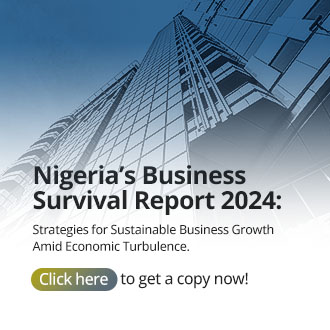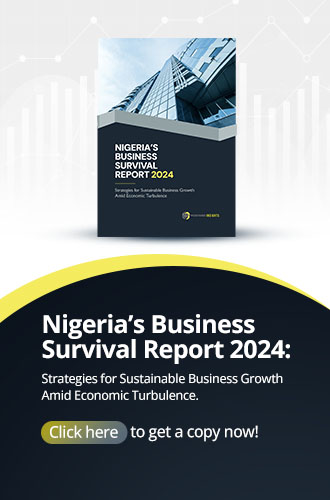DR Congo leads production and holds most of the world's cobalt reserves. Yet, the country continues to struggle with poverty, conflict, and political instability.

As part of Mustard Insight’s drive to aid the growth and development of Africa and its collective economy as outlined here, we have chosen “Solid Minerals” as one of our sectors of focus. The reason for this is simple: Africa is teeming with mineral resources. According to the United Nations’ Environment Programme (UNEP), Africa presently holds 30% of the world’s remaining mineral reserves. These include 40 percent of the world’s gold reserves, 90 percent of all chromium and platinum, and the largest remaining reserves of cobalt, diamonds, and uranium. All these minerals are a major part of the world’s technological system, which means the continent is in a great place to profit in coming decades.
The Importance of Cobalt
The device with which you are reading this very likely contains cobalt. How so? Cobalt is a major component of a lot of commonly-used items, found in everything from handheld devices to electric vehicles. Often used as an alloy component – mixed with other metals – cobalt can be engineered in anything from airplane engines to prosthetics to magnets. However, it is in rechargeable batteries that the metal finds most of its utility.
The alloy, lithium cobalt oxide (LiCoO2) is used in the manufacture of lithium-ion batteries. Batteries based on other metals such as nickel (nickel-cadmium, nickel metal hydride) also include cobalt for improved oxidation, leading to better battery performance. As a result, the metal is an integral part of the electronics supply chain. Laptops, mobile phones, iPads...all of these depend on cobalt as a component of batteries. As a result, the market intelligence company, Transparency Market Research, estimated that the global market for lithium-ion batteries was worth US$30bn in 2021, a figure projected to rise to $75bn by 2024.
The reason for this projected rise is mainly the electrification of transport. According to Allied Market Research, the global electric vehicle market was valued at $163.01bn in 2020. At a compound annual growth rate (CAGR) of 18.2%, it is projected to reach $823.75bn by 2030. All electric vehicles operate by an electric motor supplying a battery. Seeing as most of these batteries are going to be lithium- and nickel-based, the demand for cobalt is set to skyrocket in coming years. This is where African countries are in a position to profit.
Congo’s Wealth(?)
According to S&P Global Market Intelligence, 72 percent of global cobalt production worldwide in 2021 was from the Democratic Republic of Congo. The Central African country is home to over half of the world’s known cobalt reserves, estimated at 3.6 million tonnes. The country’s Katanga Province contain massive cobalt and copper deposits, estimated to be as much as 40% of the world’s reserves just in the Mukondo Mine alone.
As a result, DR Congo is so critical to the global cobalt supply chain that is has been referred to as “the Saudi Arabia of the electric vehicle age” by the global asset management firm, AllianceBernstein. Hence, the country’s importance to the EV age mirrors that of the gulf giant to the oil boom. However, DR Congo is not experiencing the growth that the Gulf countries experienced due to oil.
The demand for cobalt is presently outstripping supply, and this is largely due to the issues with mining in DR Congo. The country has for decades been wrought with high political instability in DR Congo has hindered the country from making the most of its resources. Armed conflicts in or around mining regions makes it difficult to safely mine as there is a high chance that militias may control the mines. Cobalt mines might directly finance civil wars.
There is also the issue of artisanal mining. As much as 30 percent of DR Congo’s cobalt mining is artisanal, a process where miners work individual using handheld tools to dig through rocks for minerals. While difficult to confirm, as many as 150,000 to 200,000 miners are presently working in Congo’s copper mines.
This sector is often besought with issues such as human right abuses (militias who controlled the mines may abuse workers), child labour, and dangerous working conditions. Accidents are frequent, as miners are digging through and underneath rocks by hand, often with little to no protective equipment. The occupational health of the workers is also an issue, with illnesses ranging from skeletal to respiratory disorders affecting workers. Yet, people continue to flock to the mines, as diggers can earn as much as $200 per week, which is a fortune in the poverty-stricken country.
As a result, DR Congo has also been ravaged by the “resource curse”, the paradoxical phenomenon where countries with plentiful natural resources have less economic growth and end up poorer than countries with fewer natural resources. The country has failed to establish proper control over its cobalt reserves: most large-scale mines are wholly- or majority-owned by foreign stakeholders. The country’s largest copper and cobalt mine, for instance, is owned by the Swiss mining company, Glencore. There is also the issue of corruption and the indirect perpetuation of poverty. After all, if people were wealthier on average, fewer will seek to work as diggers in artisanal mines.
There are also issues of environmental degradation. Resource extraction can degrade terrestrial biomes, cause erosion, and contaminate water with heavy metals such as mercury. The digging for artisanal mining might alter entire landscapes. Finally, there is an indirect effect on agriculture. It is not uncommon to see young people decide to work in artisanal mines instead of farms, attracted to the quick money that can be made, instead of waiting for harvests. This can then be linked to food insecurity, as the richly fertile soil of eastern Congo will often find itself bereft of farmers, most of whom have instead departed for the mines.
Cobalt Mining: What does the future hold for Africa?
Mining: Nigeria's New Found Oil
Thoughts?
We won't share your email address. All fields are required.
